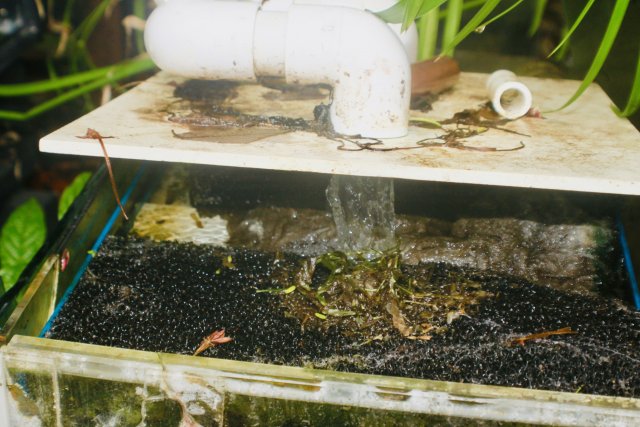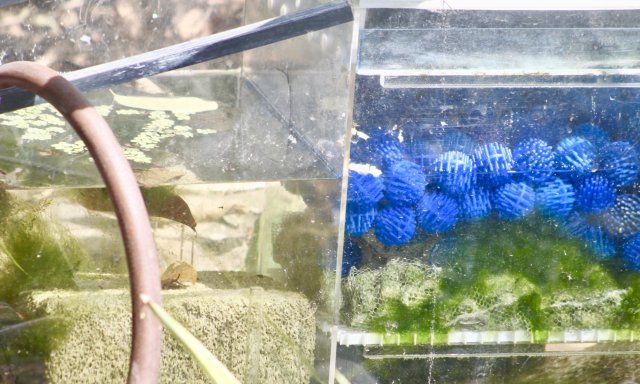I've posted pics of my four tier DIY trickle filter on my 360g tank before, but nothing as in depth as this. It's been running since the tank was set up in 2019. There were a few initial tweaks needed in the first few months but I haven't really had the need to mess with the configuration since.
I usually do a "deep clean" once every 12 months or so. This entails taking the whole filter apart, rinsing all the various media in tank water, taking the pump out, dismantling it, and cleaning the impeller etc.
However, it wasn't long before I realised that I didn't really need to take the four tier filter apart at all, all I needed to do was to uncouple the pump and clean that really.
The reason being, and this is the absolute joy of trickle filters, is that if they are set up right with no deadspots where flow can't reach, then they are basically self cleaning. And to achieve that critical and even flow over all the filter media I use a simple plastic sheet with lots of holes drilled in to "spread" the flow of water.
This ensures that all areas of the crates within the filter are being flushed with gushing tank water. And of course the media within the crates can then do it's job.
Below are a few pictures of the filter. The whole four tier crate system sits in a large blue barrel. The pump is in the very bottom crate but I've built it so the pump can be taken out easily without removing the trickle filter at all if I desire.
This first picture is the top layer of mechanical filtration. Just sponges in this one, though underneath that drilled blue sheet is a layer of filter floss too. That blue sheet is the most important part of the whole thing. It ensures even flow over all areas, no dead spots where crud can collect.
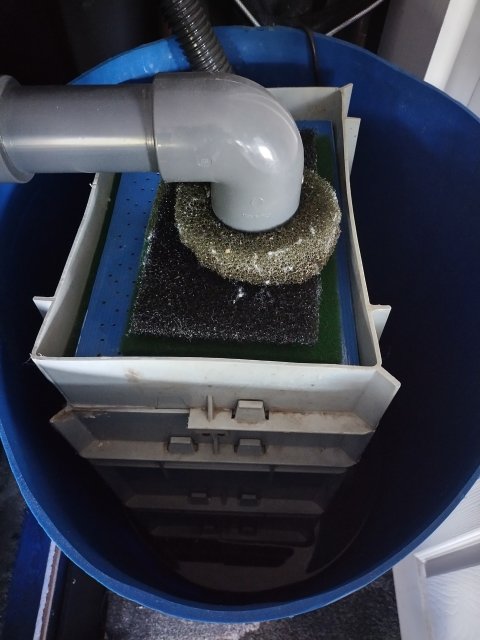
This second picture is what's under that top crate. A single thick piece of filter floss. This is my second stage of mechanical filtration.
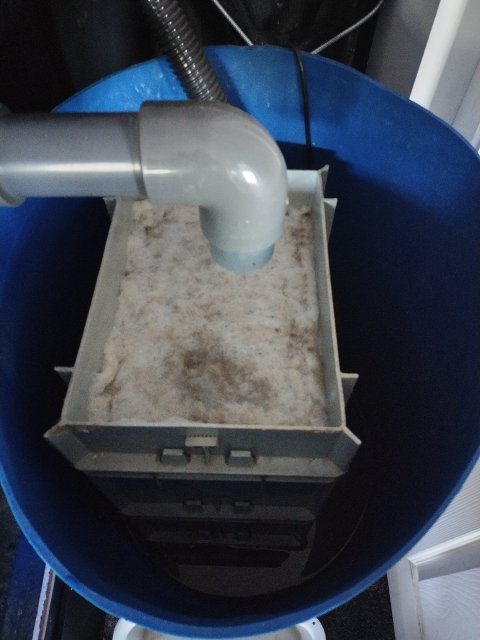
This third picture is what's under the top two crates. The top layer is just sponges and underneath the sponges are a load of plastic bio balls. This is my first biological stage.
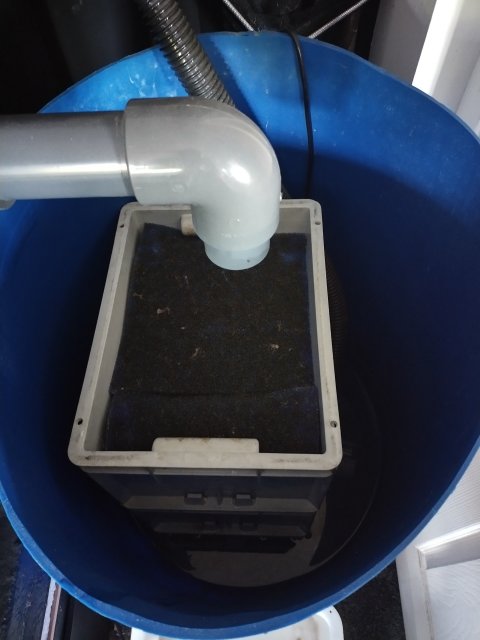
This fourth picture is what's underneath the top three crates. This is just full of ceramic bio rings and is the second biological stage. Underneath this crate is another crate housing the pump. But the pump can be easily accessed through a large hole in the side of the very bottom crate.
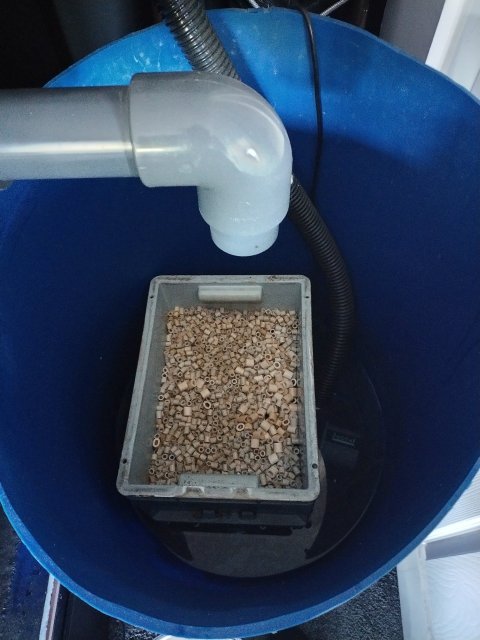
And that's it, my four tier DIY trickle filter. It is an absolute joy.
I usually do a "deep clean" once every 12 months or so. This entails taking the whole filter apart, rinsing all the various media in tank water, taking the pump out, dismantling it, and cleaning the impeller etc.
However, it wasn't long before I realised that I didn't really need to take the four tier filter apart at all, all I needed to do was to uncouple the pump and clean that really.
The reason being, and this is the absolute joy of trickle filters, is that if they are set up right with no deadspots where flow can't reach, then they are basically self cleaning. And to achieve that critical and even flow over all the filter media I use a simple plastic sheet with lots of holes drilled in to "spread" the flow of water.
This ensures that all areas of the crates within the filter are being flushed with gushing tank water. And of course the media within the crates can then do it's job.
Below are a few pictures of the filter. The whole four tier crate system sits in a large blue barrel. The pump is in the very bottom crate but I've built it so the pump can be taken out easily without removing the trickle filter at all if I desire.
This first picture is the top layer of mechanical filtration. Just sponges in this one, though underneath that drilled blue sheet is a layer of filter floss too. That blue sheet is the most important part of the whole thing. It ensures even flow over all areas, no dead spots where crud can collect.

This second picture is what's under that top crate. A single thick piece of filter floss. This is my second stage of mechanical filtration.

This third picture is what's under the top two crates. The top layer is just sponges and underneath the sponges are a load of plastic bio balls. This is my first biological stage.

This fourth picture is what's underneath the top three crates. This is just full of ceramic bio rings and is the second biological stage. Underneath this crate is another crate housing the pump. But the pump can be easily accessed through a large hole in the side of the very bottom crate.

And that's it, my four tier DIY trickle filter. It is an absolute joy.



